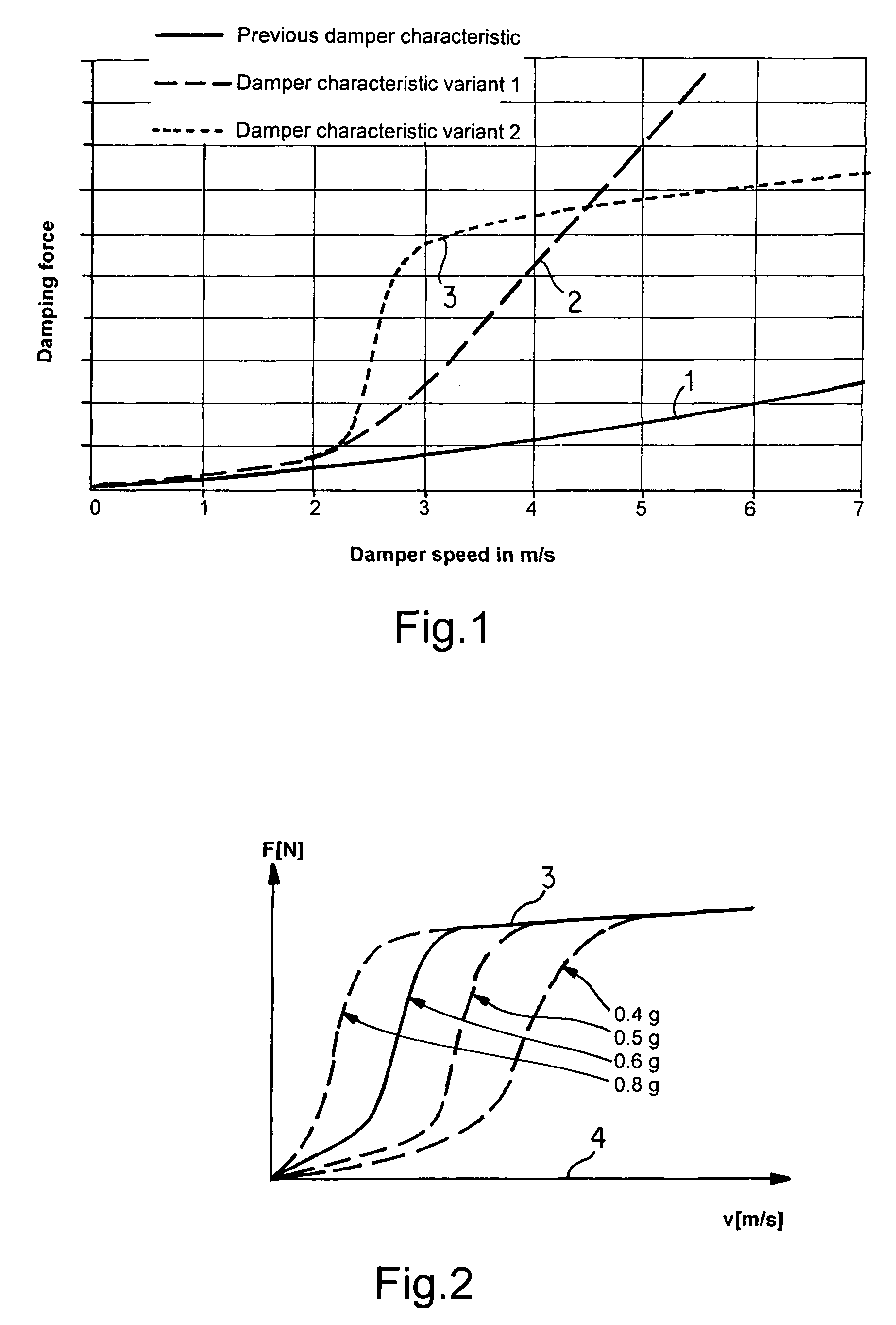Vibration damping method
a vibration damping and vibration technology, applied in the direction of shock absorbers, mechanical equipment, transportation and packaging, etc., can solve the problems of large load in the vehicle body and chassis, the damping force of such high piston speeds is too low to adequately dissipate the majority of the energy must be carried by the body structure, etc., to achieve the effect of dissipating the kinetic energy of the accelerated wheel, negative effect on driving comfor
- Summary
- Abstract
- Description
- Claims
- Application Information
AI Technical Summary
Benefits of technology
Problems solved by technology
Method used
Image
Examples
Embodiment Construction
[0018]The first characteristic variant 1 of a damping force curve, represented by a continuous line in FIG. 1 as a function of piston speed is generated by a vibration damping method for a wheel suspension of a motor vehicle according to the state of the art. In damping force adjustment for motor vehicles, in particular for passenger vehicles, the damper characteristic is considered up to a piston speed of approximately 1-2 m / s from the standpoint of comfort and driving safety. As a rule, for a damping force characterization greater than 2 m / s, at most only a slightly progressive rise is obtained from the piston / valve combinations according to the state of the art. This is usually assumed in chassis design.
[0019]At very high vertical accelerations of the wheel greater than 2 m / s, such as those occurring, for example, in driving over an obstacle or a threshold, extremely high loads occur in the vehicle body and chassis due to the accelerated unsprung masses in the end stop range.
[002...
PUM
 Login to View More
Login to View More Abstract
Description
Claims
Application Information
 Login to View More
Login to View More - R&D
- Intellectual Property
- Life Sciences
- Materials
- Tech Scout
- Unparalleled Data Quality
- Higher Quality Content
- 60% Fewer Hallucinations
Browse by: Latest US Patents, China's latest patents, Technical Efficacy Thesaurus, Application Domain, Technology Topic, Popular Technical Reports.
© 2025 PatSnap. All rights reserved.Legal|Privacy policy|Modern Slavery Act Transparency Statement|Sitemap|About US| Contact US: help@patsnap.com


